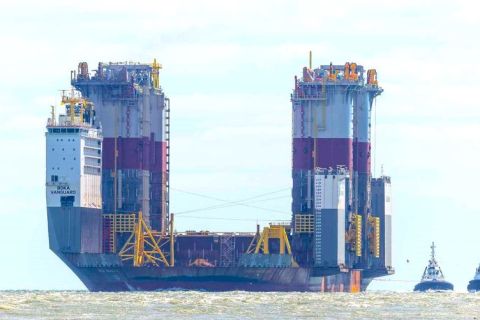
Joint ventures are becoming an increasing presence in the major shale plays, shaking up the traditional deal structures in U.S. plays.
Bringing two sets of companies together leads to all sorts of challenges, said Morgan Lewis & Bockius LLP partner David Asmus during the recent Mergermarket Energy M&A Forum in Houston.
Factors such as alignment issues and investing companies which haven't acquired an interest in all the areas of the joint venture make the new deal paradigms an often confusing maze to navigate. Often time investors don't own interest in midstream of water disposal operations in the area, relying on the shale player to operate the assets.
Plus, they can't be certain the operator, who may be sitting on a larger land position outside the JV-area, will have rigs operating on the land in which they've invested.
"If you sign up with a Chesapeake, or a Range, or whatever, and two months later they sign with someone else, how do you know that you're still going to have your properties operated and developed?" Asmus said.
Morgan Stanley global co-head, energy group and managing director Thomas Langford said joint venture agreements used to be more information, relying and handshake agreements and transfer of technology following completion of the deal.
"Today, these details are papered down to the lowest possible detail, in terms of number of employees, who's going to pay if there's excess costs, etc." he said.
The constant shifting of details is causing various growing pains for the industry, and Langford said the industry is starting to see stresses as JV partners increase their ambitions around plays.
One structure being renewed in the shale plays is royalty trusts, which Langford said is indicative of the greater predictability around shale plays and also the desire on the investor side to gain access to these types of assets. As the unconventional plays are proved up with experience and infrastructure, it is easier to introduce investment vehicles that traditionally were only used in conventional plays.
One of the first big drivers of shale JV deals has been international E&Ps jumping into the market.
Chris Tucker, senior vice president, Financial Dynamics, explained that "first movers in this market were often international companies was because they were in fact looking for the technology to take it elsewhere."
Tucker said the internationals are looking to bring the technology to Europe, Africa and especially Asia.
This creates a tension for the shale operators who, while wanting to bring in partners for funding, must also give up technological know-how in the form of committees, while also wishing to prevent proprietary technology from spreading to competitors. Tucker said the key basics of the JV are training companies on how to horizontally drill and frac, which is what most of the investors are eager to learn.
The uptick in JVs in the current low-gas price market is also interesting. Asmus said, "If you would have asked me two years ago in in this low gas-price environment if I you'd see lots of people screaming to do joint ventures, I'd probably say no."
He said that companies are now entering JVs to expand shale technology to the global market or because it's the best deal structure in place right now.
Contact the author, Stephen Payne, at spayne@hartenergy.com.
Recommended Reading
E&P Highlights: Oct. 14, 2024
2024-10-14 - Here’s a roundup of the latest E&P headlines, including another delay at one of the largest gas fields in the world and two major contracts in West Africa.
Chevron’s Gulf of Mexico Anchor Project Begins Production
2024-08-12 - Chevron and TotalEnergies’ $5.7 billion floating production unit has a gross capacity of 75,000 bbl/d and 28 MMcf/d.
Chevron Gets Approval for Farm-in Offshore Uruguay
2024-09-26 - Chevron Corp. received approval for farm-in at the AREA OFF-1 block offshore Uruguay and along with partner CEG Uruguay SA eyes the acquisition of 3D seismic over the remainder of 2024.
International OFS Firm HMH Plans to IPO, Activate in M&A
2024-08-13 - The firm is a 50/50 joint venture of Baker Hughes and Akastor ASA formed in 2021 to include brands such as Hydril and Vetco Gray as well as Wirth and Maritime Hydraulics.
How Chevron’s Anchor Took on the ‘Elephant’ in the GoM’s Deepwater
2024-08-22 - First oil at Chevron's deepwater Anchor project is a major technological milestone in a wider industry effort to tap giant, ultra-high-pressure, high-temperature reservoirs in the Gulf of Mexico.
Comments
Add new comment
This conversation is moderated according to Hart Energy community rules. Please read the rules before joining the discussion. If you’re experiencing any technical problems, please contact our customer care team.





